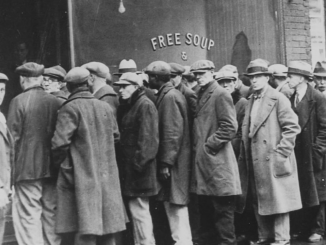- Fitch Ratings warns that the U.S. “Liberation Day” tariffs, announced April 2, with a minimum 10% rate and up to 64% for China (from 35% in March 2025 forecasts), are heightening recession risks and limiting Federal Reserve rate cuts.
- The U.S. effective tariff rate (ETR) jumps to 25%, above the 18% Fitch projected, hitting 20% for the EU and 46%-24% for Asian economies like Vietnam, Thailand, and Japan, marking the highest in over 115 years.
- These steep increases, exceeding Fitch’s earlier assumptions, reshape global trade, raising import costs and threatening economic growth, with some sectors like semiconductors and pharmaceuticals still under negotiation.

Fitch Ratings has sounded the alarm on the U.S. economy, warning that the latest tariff hikes, dubbed “Liberation Day” increases by the government on April 2, are pushing the nation toward a recession and tying the Federal Reserve’s hands on interest rate cuts. These new tariffs slap a minimum 10% rate on all U.S. trade partners, with a select group of 57 countries facing much steeper climbs—think 20% for EU imports and a hefty 64% for China, far exceeding Fitch’s earlier March 2025 projections of 15% and 35%. The ripple effect hits Asia hard too, with Vietnam at 46%, Thailand at 36%, Taiwan at 32%, India at 26%, Korea at 25%, Malaysia at 24%, and Japan at 24%, reshaping global trade dynamics in a way Fitch says is unprecedented in over a century.
The numbers tell a stark story: Fitch now pegs the overall U.S. effective tariff rate (ETR) at 25%, a jump from the 18% they forecasted in their March 2025 Global Economic Outlook and the highest since before 1910. This escalation isn’t just about slapping extra costs on imports—it’s a structural shift that could choke economic growth. Higher tariffs mean pricier goods, which could cool consumer spending and squeeze businesses reliant on global supply chains, all while inflation pressures limit the Fed’s room to ease monetary policy. Fitch notes some wiggle room in the country-specific rates, with exclusions still in play for sectors like semiconductors, pharmaceuticals, copper, and lumber, but the broader impact is clear: the U.S. is doubling down on protectionism at a scale not seen in modern times.
Fitch’s analysis paints a picture of a global economy at a tipping point, with the U.S. driving the change. The leap from a 35% ETR on China in their March outlook to 64% now reflects a policy shift that caught even seasoned analysts off guard, dwarfing their already cautious assumptions. For context, these levels hark back to an era before free trade became a cornerstone of global prosperity, and they signal a retreat from that model. Other Asian economies, once seen as buffers in supply chain diversification, now face tariffs that could disrupt everything from tech manufacturing to raw material flows. Fitch warns that this tariff surge doesn’t just raise costs—it risks a deeper economic slowdown, with recession odds climbing as the U.S. navigates this uncharted territory.
WallStreetPit does not provide investment advice. All rights reserved.
- Bulenox: Get 45% to 91% OFF ... Use Discount Code: UNO
- Risk Our Money Not Yours | Get 50% to 90% OFF ... Use Discount Code: MMBVBKSM
Disclaimer: This page contains affiliate links. If you choose to make a purchase after clicking a link, we may receive a commission at no additional cost to you. Thank you for your support!



Leave a Reply